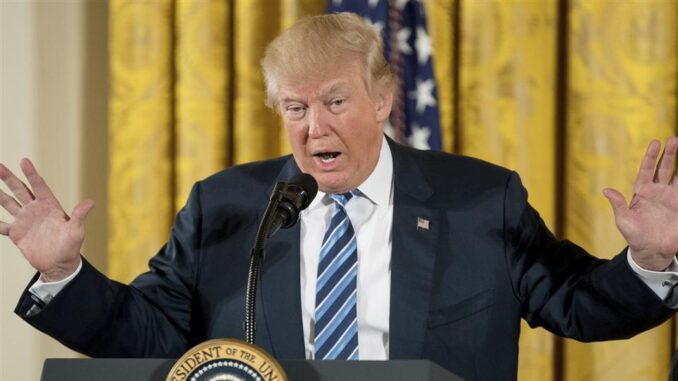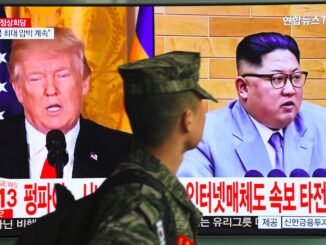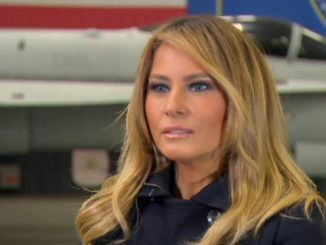
The Trans-Pacific Partnership (TPP) is a proposed trade agreement formerly among 12 countries that was intended to strengthen economic relationships among these countries by eliminating tariffs and promoting free trade. The twelve countries involved in signing the TPP proposal on February 4, 2016, were Canada, Japan, Australia, Mexico, Vietnam, Singapore, Brunei, Malaysia, New Zealand, Chile, the United States, and Peru. Donald Trump’s executive order to remove the U.S. from the TPP on January 23,2107, was a serious mistake. Trump withdrew the U.S. from the TPP with intentions of improving the growth of U.S. jobs and restoring the deteriorating manufacturing industry. He believes that the TPP is detrimental to U.S. employees and the manufacturing industry because an enormous amount of U.S. jobs would be exported to low-wage nations. Many U.S. companies outsource jobs to other countries in order to capitalize on cheaper operational and labor costs. Even though Trump’s decision promotes the growth of jobs in the U.S., it will be more harmful in the long-term because it will be difficult for the U.S. to sustain its influence and leadership in international economic and political affairs. Also, China would be in a position to take advantage of the U.S.’s withdrawal from the TPP and become a dominant country in the global economy. Therefore, Trump’s decision will be more detrimental than beneficial for the U.S.’s economy.
By resigning from the TPP, the U.S. loses a huge opportunity to expand their markets, eliminate tariffs, and promote exports. The TPP would have been the largest free trade deal in history because the countries involved control an annual gross domestic product (GDP) of roughly $28 trillion, which represents approximately 40 percent of the global GDP and one-third of world trade. Implementing the TPP would have tremendously improved international trade relationships between the original countries involved, which would have been far more beneficial for the U.S. than Trump’s plan to increase homeland job security. Fortunately for the U.S., immediate penalties to international trade flows have not occurred from their decision to withdraw from the TPP because they still maintain existing free trade agreements with six of the TPP countries (Mexico, Chile, Singapore, Australia, Canada, and Peru). However, Trump’s decision will place the U.S. at risk for economic and political disaster in the near future.
As a result of Trump’s decision, China was granted a huge opportunity to surpass the U.S. and become the dominant country in the global trade economy. Chinese President, Xi Jinping, plans to take advantage of Trump’s foolish decision in order to improve China’s relationships with several of the other countries involved in the TPP. China intends to negotiate a new free trade agreement with several of the original countries involved in the TPP and other neighboring Asian countries. The new free trade agreement in proposal is called the Regional Comprehensive Economic Partnership (RCEP), and it would include 16 Asia-Pacific countries. Similar to the TPP, the RCEP intends to promote free trade by eliminating tariffs and strengthening economic relationships among the countries involved. If the RCEP is successfully implemented, then China will be in as strong position to create the guidelines of
Many Asia-Pacific countries invested a tremendous amount of political capital into a U.S. led trade deal that was not administered. Therefore, since the U.S. was unable to commit to the TPP, their reputation and credibility is undermined considerably. This will be a disaster for the U.S. economy because they will lose the majority of their influence in the Asia-Pacific region. Many countries in both Asia and Latin America already view China as the superior and more reliable country in the global trade economy than the U.S. These countries prefer to negotiate trade agreements with China because it is hard for them to trust the U.S. The U.S. should be the dominant country in the global trade economy, not China. Trump is leading the U.S. towards failure because he should have realized sooner that his decisions would lead to devastating consequences for the U.S.’s economy. The U.S. should have seized their opportunity to claim an authoritative position and create the guidelines for the global economy, instead of handing it over to China. In the future, it will be difficult for the U.S. to negotiate favorable trade conditions and access the Asian supply chain because strong economic relationships will be established between China and the majority of the Asia-Pacific countries.
Unless otherwise stated, PONIREVO and/or its licensors DO NOT own any intellectual property rights in the website and material on the website. Majority of the site’s content has been scraped and auto posted by a third party artificial intelligence program —– PONIREVO Creation Team.
Proudly WWW.PONIREVO.COM
by Dat Ngo



